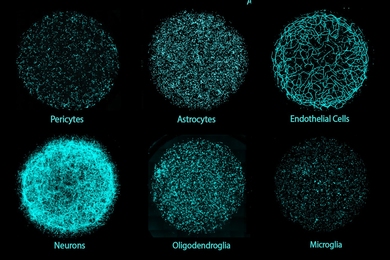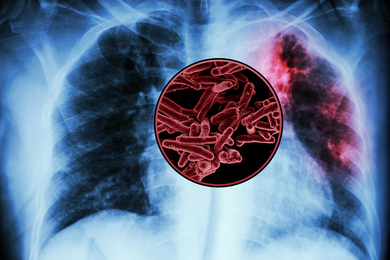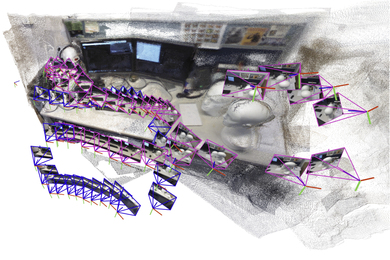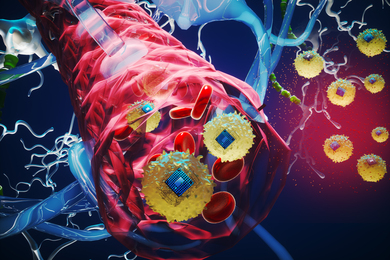The discovery of a gene that suppresses the development of colon tumors in laboratory animals, reported in the November 19 issue of Cell, represents one of the first demonstrations of a new strategy for exploring the genetic origins of diseases such as cancer, hypertension, and atherosclerosis.
Using new genetic maps developed at the Whitehead Institute for Biomedical Research, scientists from Whitehead, MIT and the University of Wisconsin have located a gene that greatly reduces the severity of multiple intestinal neoplasia (Min) syndrome in mice. Min is equivalent to the human disease familial adenomatous polyposis coli (FAP), an inherited condition associated with the appearance of hundreds to thousands of polyps in the colon and a high incidence of colon cancer.
Colon cancer, like many common human diseases, is a "polygenic" disease-it is caused by the interaction of several different genes and the environment. One of the goals of modern genetics is to develop tools that will help scientists dissect polygenic diseases as a basis for new diagnostic and treatment techniques.
For example, two siblings may inherit the same mutant gene that causes predisposition to colon cancer, but one develops only a few colonic polyps and the other develops more than 100 polyps, as well as tumors elsewhere in the body. One possible explanation for this difference is that while both siblings inherited the same mutant colon cancer gene, they inherited different copies of a second gene that interacts with the first to reduce the likelihood of cancer. Knowing the identity of the second gene could have important diagnostic implications for the siblings and their descendants. Also, understanding how the two gene products interact in health and disease could lead to new forms of cancer therapy.
Dr. Eric Lander, one of the project leaders and director of the Whitehead/MIT Center for Genome Research, explains that it is extremely difficult to study polygenic diseases in human populations. Fortunately, rodent models often provide alternative experimental systems.
The Whitehead scientists and their collaborators began with the Min mouse, an excellent model for familial colon cancer. (Min mice have a small mutation in the mouse counterpart of the human gene responsible for FAP.) Previously, the Wisconsin group had shown that the number of intestinal tumors in a Min+ mouse (a mouse carrying the mutant Min gene) is strongly affected by genetic background. For example, when they crossed a standard Min mouse with a closely related mouse strain, Min+ offspring developed an average of 29 intestinal tumors. In contrast, Min+ offspring from a match between a Min mouse and a distantly related laboratory strain (AKR) showed an average of only six tumors. This finding suggested that the AKR mouse carried one or more genes capable of protecting against the tumor-promoting effect of Min.
Together, the Whitehead and Wisconsin groups set out to find these genes. Using new maps of the mouse genome, they analyzed a series of genetic crosses between Min and three other mouse strains. The maps, developed at the Whitehead Institute and MIT, consist of more than 2,000 different genetic markers (the markers are highly variable stretches of DNA distributed throughout the mouse genome). By comparing the inheritance pattern of disease severity (number of colon tumors) with the inheritance pattern of the genetic markers, the scientists discovered a major genetic modifier of the Min gene on mouse chromosome 4. The new gene is called Mom-1 (for Modifier of Min-1).
Biomedical researchers are becoming familiar with the discovery of genetic lesions that lead to disease. Dr. William Dove, project leader of the Wisconsin group, explained that the distinctive feature of this study is that it identifies a gene of a different class-a gene with modifying functions. The discovery of such a gene is far more difficult, he says.
Dr. William Dietrich, a research scientist in the Whitehead/MIT Genome Center and the first author of the Cell paper, says, "It is intriguing that the Mom-1 region of the mouse genome is virtually identical to a region on human chromosome 1 that is mutated or deleted in some human tumors, including colon cancer. The actual gene associated with tumor progression on the human chromosome has not been identified; our results indicate that it may be the human counterpart of the Mom-1 gene."
The Whitehead and Wisconsin groups have localized the Mom-1 gene to a small region at one end of mouse chromosome 4. The next steps will be to find the coding sequence for the gene, identify its human counterpart and determine how both genes interact with other factors to affect cell growth.
In the meantime, the Whitehead scientists are using the new gene mapping techniques to trace genes associated with other polygenic diseases, including diabetes and hypertension.
A version of this article appeared in the December 1, 1993 issue of MIT Tech Talk (Volume 38, Number 16).





